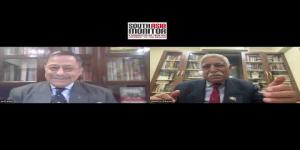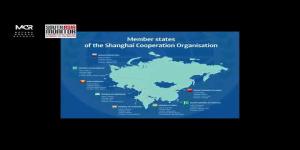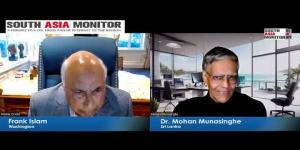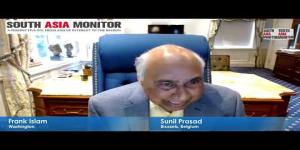Assam's Demographic Dilemma: Will Politics of Population Divide or Unite Northeast India's Most Populous State?
A seminal 2020 study by Das and Talukdar outlines the socio-economic and political consequences of this migration. The authors note that the influx, particularly post-1971, has led to widespread fear among Assamese communities about becoming minorities in their own homeland. Migration has altered landholding patterns, changed linguistic profiles, and generated social unrest.

On July 28, 2025, Assam’s Chief Minister Himanta Biswa Sarma made a striking demographic projection stating that by the year 2041 Assam’s Hindu and Muslim populations may stand at near parity of a 50:50 ratio. He attributed this projected equilibrium not just to birth rate differentials but to the long-standing issue of illegal migration from Bangladesh. The statement was not simply a statistical estimate but a powerful rhetorical moment, one that has again revived the long-standing debates about migration, indigeneity, and the future of Assamese society.
The claim reverberated across Assam’s political and social landscape, but one needs to question: whether the statement was an objective forecast, a calculated political signal, or a mix of both?
The demographic jitter is a major cause of concern for the state of Assam that has not only crippled the state in terms of its development and progress but over the years has also posed serious threats upon the indigenous people. Migration has been the root reason behind the state’s long history of grappling with the demographic imbalance.
Demographic Shift
To understand the weight of Sarma’s statement, one must situate it within Assam’s evolving demography. According to Census 2011, Muslims constituted 34.22% of Assam’s population, while Hindus stood at 61.47%. The Muslim population was largely concentrated in the western and central districts, such as Dhubri, Goalpara, Barpeta, and Nagaon. According to the 2001 census, the Muslim population in Dhubri, was 74.3%, which increased to 79.67%. In Barpeta, the Muslim population was 59.3% in 2001, which again increased to 70.74% in 2011. In Hailakandi, the Muslim population was recorded at 60.32% in 2011 which was 57.6% in 2001, and in Karimganj, the Muslim population which was 52.3% in 2001, rose to 56.36% in 2011. The Census Report of 2011 also shows that the Muslim population in Assam has exhibited a significant growth rate, approximately 38 percent higher than the national average. In a research titled ‘Classification and Ranking of Districts in Assam Based on Growth of Population’, M. Borah and Sangeeta Borah found that in nine districts, namely, Dhubri (79.67%), Barpeta (70.74%), Goalpara (57.52%), Hailakandi (60.31%), Karimganj (56.36%), Bongaigaon (50.22%), Nagaon (55.36%), Darrang (64.34%), and Morigaon (52.56%), Muslims formed the majority demographic group. In the same study it was also found that certain taluks within these districts have recorded a decline in the Hindu population over time. For instance, Kalgaicha (-48.79%), South Salmara (-23.14%), Baghbor (-21.85%), and Dotoma (-15.84%) experienced a negative growth rate in the Hindu population between 1901 and 2001. Based on the data, there is a high probability that the stats of the upcoming 2021 census can be even worrisome.
This demographic shift raises concerns regarding possible out-migration of indigenous Hindu families, which may have been influenced by a range of socio-economic or political factors. The continued decline of the Hindu population in several areas has led to discussions about the potential implications for the demographic composition and cultural identity of the region, and thus the data available on record validate the statements made by the Chief Minister Sarma. He also noted that of the growing Muslim population, only 3 percentage of the population is indigenous Muslim, which might not be wrong either as the Muslim population in districts like Sivsagar, Jorhat and Dibrugarh not encompassed by border areas was 8.30%, 5.01%, and 14.9% respectively. A clear distinction in the growth of Muslim population in towns near the border areas as compared to that of in the towns not encircled by borders shows that the illegal influx of Muslim population is escalating at a higher rate rather than that of indigenous Muslim population.
Moreover, according to reports, the percentage of Muslim population in the state is much higher than the national average of 14.2% Muslims in India. The Muslim percentage of the state constitutes 6.22 of total Indian Muslims. But the pertinent question that still hovers: Is the growing Muslim population of Assam indigenous or simply influx of illegal immigrants?
Considering the data on hand it would be very hard to say that the growing Muslim population of the state is of the indigenous ones. Deputy Speaker of Assam Legislative Assembly Dr. Numal Momin raised concerns by stating that 15 districts in Assam are now Muslim-majority. In fact, the trend lines since 1951 also suggest that the proportion of Muslims in Assam has steadily increased. In 1951, Muslims made up roughly 24.68% of the population. This climbed to 28.43% in 1991 and 30.92% in 2001, reaching 34.22% by 2011. As such CM Sarma’s projection for 2041 of a 50% Muslim population is simply based on the valid assumption that this rate of growth will continue unabated.
Widespread Fear
A seminal 2020 study by Das and Talukdar outlines the socio-economic and political consequences of this migration. The authors note that the influx, particularly post-1971, has led to widespread fear among Assamese communities about becoming minorities in their own homeland. Migration has altered landholding patterns, changed linguistic profiles, and generated social unrest. The projection that Assam's population could be evenly split between Hindus and Muslims by 2041 is not just a number. It is a narrative that reflects anxieties over land, identity, and sovereignty. CM Sarma’s statement taps into deep-seated fears and long historical wounds, but it also risks reinforcing a polarizing view of Assam's future. The projection is also powerful not only because of its statistical precision, but also because of its political salience. In a context where official data is absent since the 2021 Census is yet to be released, such projections fill the vacuum with politically convenient truths. They shape public opinion, justify policy actions, and marginalize dissenting voices.
Assam’s demographic anxiety is deeply rooted in its history of migration from present-day Bangladesh. The flow of people began under British colonial rule when tea plantations, river valleys, and forest tracts in Assam were opened to settlers from East Bengal. After the Partition of 1947 and especially following the 1971 Bangladesh Liberation War, these migratory flows intensified. As such, there is no denying that migration and demographic change have reshaped Assam. But the challenge lies in addressing these issues without resorting to scapegoating, collective punishment, or communal binaries.
Demographic Dilemma
As Assam moves forward it must choose between two visions: one that sees demographic diversity as a threat and another that sees it as a reality to be managed with compassion and care. The politics of population will remain central to Assam’s story, but whether it divides or unites will depend on how that story is told and by whom, and as such statements as made by the CM of Assam can raise awareness amongst the indigenous to work together and help the government in its long-term desire to resolve the demographic dilemma of the state.
(Bishaldeep Kakati is Advocate, Gauhati High Court and Bagmita Borthakur is PhD Research Scholar, BITS, Pilani. Views expressed are personal. They can be contacted at deep.kakati99@gmail.com )










Post a Comment